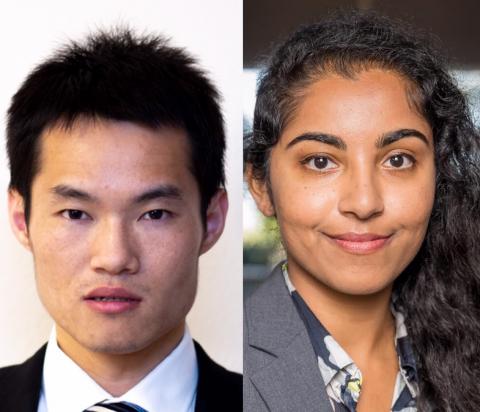Lauren D. Black, III
Assistant Professor of Bioengineering
Tufts University
Seminar Information

Cardiovascular disease is the leading cause of death in the US and rapidly becoming the leading cause of death worldwide. While a number of therapies have sought to arrest the progression to heart failure following myocardial infarction (e.g. cell therapy and tissue engineering), these have fallen short in promoting the restoration of normal cardiac function following injury. Similarly, congenital heart defects (CHDs) are the leading cause of mortality in live-born infants and young children. Children with severe CHDs such as Hypoplastic Left Heart Syndrome and Tetralogy of Fallot require several major reconstructive surgeries starting within the first few days after birth. However, these surgeries do not replicate normal heart anatomy and function, and many patients suffer from serious secondary complications throughout life. In each of these situations there are significant changes to the mechanical environment, both in terms of the mechanical stresses presented to the cells via the normal function of the organ and in the composition and mechanical properties of the extracellular matrix (ECM). Given the growing body of evidence on the role of ECM properties in signaling cell fate and function, understanding the role of the alterations in the complex mechanical signaling environment in health and disease could be critical to the development of a new class of therapeutics aimed at altering mechanotransductive signaling in disease. In this talk I will highlight some of my labs work aimed at understanding the importance of changes to the timing of biophysical stimulation on functional cardiac development and the role of alterations in the properties of the complex ECM during normal and pathological development on cell fate and function. I will also discuss how these findings may be utilized in the future to develop new therapeutic strategies for treating the injured or malformed heart.
Lauren D. Black III has been an Assistant Professor in Biomedical Engineering at Tufts University since 2010. His lab focuses on the development of new therapeutic strategies to treat cardiac injury and/ or malformation in both pediatric and adult patients. The target of many of these strategies is extracellular signaling in the cardiac microenvironment and particularly the role that changes to the properties of the extracellular matrix in health and disease play on cell fate and function. His lab also has a longstanding interest in the use of biophysical conditioning of engineered cardiac tissue through the use of multi-functional and highly programmable bioreactors. Prior to joining Tufts he completed his postdoctoral work under Dr. Robert Tranquillo and Dr. Doris Taylor at the University of Minnesota. He earned his Ph.D. in Biomedical Engineering from Boston University in 2006 in the lab of Dr. Bela Suki. His undergraduate degree is in Aerospace Engineering from the University of Cincinnati.
